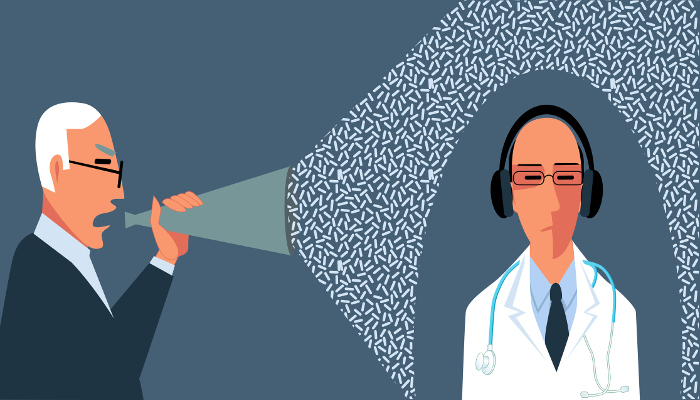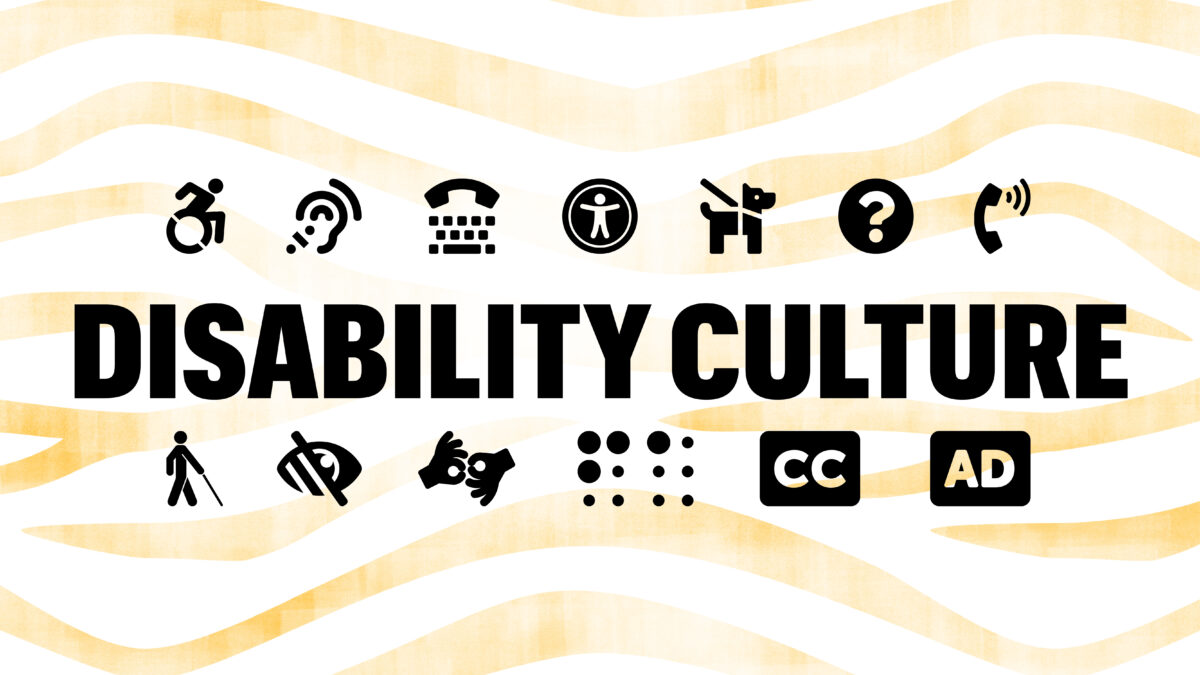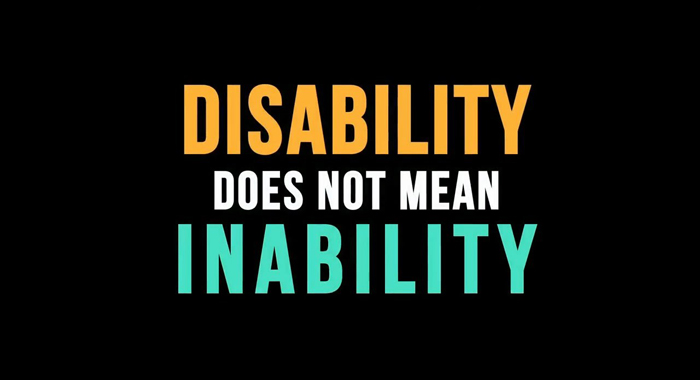
Healthcare providers play a vital role in their communication and treatment of patients with disabilities and have several factors that influence the dynamic between the relationship and interaction that is able to take place. There are different models for explaining what disability is, including a charity, social, and medical model. These models all contribute to the perception of an individual with disabilities and the stigma that may be associated with them.
The charity model of disability is an approach to disability that is characterized by notions of caretaking and protection, in terms of the vulnerable needing protection and care and the need to protect the economic and social order by controlling these "deviant members" of society using segregation (Jackson, 2018). This is important to look at when looking at how individuals with disabilities may be referred to as such as "the disabled" or "the mentally disturbed" and more. This comes from a long legacy of inscribing value on "able-bodied" societies (Jackson, 2018).
The social model of disability which explained that disability comes from barriers within society such as oppression and discrimination rather than the impairment itself (Jackson, 2018). The idea is to shift the responsibility of disability from the individual needing to be cured, to the society needing to dismantle barriers that construct the disability (Jackson, 2018). An example we could examine are ramps for those in wheelchairs. This model believes if a person would still have access to the same areas with these aids in place, the focus is lessened on the individual with a disability.
The medical model of disability focuses on a person's "impairment" that can be diagnosed, cured, or at least be rehabilitated, using modern medicine. This model also addresses that these interventions will be provided by all-knowing medical professionals (Jackson, 2018).

People with disabilities make up a substantial part of the United States population, however, large disparities exist between people with disabilities in multiple fronts such as employment, poverty, and government support, and a lag of support in healthcare and income maintenance programs (Brucker & Hountenville, 2015). According to the National Institute for Disability and Rehabilitation Research, people with disabilities are more likely to be obese and smoke than people without disability (Brucker & Hountenville, 2015). Data from the Behavior Health Risk Factor Surveillance System (BRFSS) shows that individuals with disabilities have higher rates of risky health behaviors than those without disabilities. According to the BRFSS, in 2013, twenty-five percent of adults with disabilities smoked compared to the sixteen percent of adults without disabilities (Brucker & Hountenville, 2015). The BRFSS also reported that forty percent of individuals with disabilities struggle with obesity, compared to twenty-five percent of those without disability (Brucker & Hountenville, 2015). In 2014 the U.S Senate Health, Education, Labor, and Pensions Committee releases their investigation of the barriers individuals with disabilities face and discovered the key barriers included cultural and prejudice biases, challenges with the current system of public growth, lack of housing or transportation (Brucker & Hountenville, 2015).

Those with disabilities are significantly more likely to have physicians not listen to them (Smith, 2009). Along with this is was found in a study conducted by Diane Smith that individuals with disabilities perceive that physicians are significantly more likely to not explain treatment in a way the patient can understand, do not treat them with respect, do not spend enough time with them and do not involve them in treatment decisions compared to those without disabilities (2009).

Individuals with disabilities were found to be less likely to receive timely appropriate medical treatment for their chronic services, and due to this translates to higher mortality rates, complications, and healthcare costs (Roeker et al, 2005). When practicing physicians were surveyed by Diane Smith, about half the states have no training related to services for individuals with disabilities (2009). In this study, it was also stated they were more likely to provide their services to patients with chronic illnesses, or mobility, cognitive, or psychiatric disabilities than to serve those with communication limitations of visual impairments (Smith, 2009).

Within this research, Diane Smith highlighted the importance of culture on health considerations, and in this case, disability culture was having an impact on the patients. Disability culture is defined by Smith as "including shared, longstanding social oppression; art; humor; history; evolving language and symbols; unified worldview; beliefs and values; and strategies for surviving and thriving" (2009, p. 207). It is more common to see healthcare disparities, cultural competency, and communication issues focused on race and ethnicities rather than to be focused on the needs of individuals with disabilities. There is enormous diversity within the population of those with disabilities when looking at varying etiologies, underlying health conditions, degrees of activity limitations, ages of onset, longevity, gender, ethnicity, socioeconomic status, and more (Smith, 2009).

An important communication barrier to care for individuals with disabilities was found by a study conducted by Lisa Iezzoni, as often the medicalization of disability that many clinicians use may cause a disconnect between the physician and the patient (2006). Disability does not equal sickness, so using illness-related terms can cause further push this disconnect to occur. Better communication leads to better clinical outcomes. This further stresses the importance to build the patient-provider relationship to build trust. This communication is also important in keeping patients informed and participating as fully as they may wish to, which alleviates concerns involving patient safety.

A study conducted in 2016 found that people with intellectual and mental health disabilities are overall confused about the meaning of their diagnosis and do not identify with the labels given to them (Robinson et al.). This study found 3 main themes including self-concept, impact, and coping. Self-concept encompassed what individuals knew about this diagnosis and the experience they have had (Robinson et al., 2016). This also expanded into subthemes that included an individual's understanding of their labels, how they understood their past experiences, and how well they believe their label fits them. The impact reflects the influences of having both intellectual disabilities and mental health on the individual's life (Robinson et al., 2016). This was broken down further into subthemes that relate to their communication and feelings of being heard, the levels of control they felt they had, and the vulnerability and expectations of discrimination (Robinson et al., 2016). Finally, coping was discussed as many participants didn't see themselves as victims or disabled, but rather focused on their specific individualized needs rather than their diagnoses (Robinson et al., 2016). Many coping methods were expressed which included distraction techniques, proactive strategies, and self-soothing.

Lisa Iezzoni's study found that with the diversity among different disabilities, the patients' interviews did not expect their provider to know everything, but expected the provider to be honest about what they do not know and seek additional needed input from a clinical specialist and even themselves (the person with the disability (2006).

Dr. Joe Michael Reynolds, Ph.D., is an Assistance Professor of Philosophy and Disabilities Studies at Georgetown University. He argues that the current medical model is unlikely to change and struggles to improve due to the "ableist conflation" or disabilities being correlated to pain and suffering (Reynolds, 2017). Disability in itself is a complex term that can have even more complex behind it. This adds to the stigma and increases misguided assumptions about disabilities and individuals with them. This ableist stigma leads to epistemic and practical injustice to patients with disabilities.

Dismantling the ableist confection is needed for proper communication with individuals with disabilities in a healthcare setting. Reynolds highlights the importance of distinguishing disabilities, instead of clustering them together under one label, at a minimum by congenital vs. noncongenital, healthy vs. unhealthy, visible vs. invisible, world-creating vs. nonworld-creating, trauma-induced vs. non-trauma-induced, and suffered vs. non-suffered (2017). Reynolds urges practitioners in particular as doing this could avoid conceptual errors that have become entrenched in health communication (2017).

A case study conducted in 2017 used an intervention technique in Pendleton, Oregon to examine social supports for individuals with disabilities facing significant health disparities, including accessing healthcare. The program they used was called Community Engagement which provided a systematic process of getting members of the community involved in solving issues of well-being for people with disabilities. Community Engagement involves four common practice elements: knowing the community, establishing positions and strategies, building and sustaining networks, and mobilizing constituencies. The study found that bringing together diverse groups of people will increase awareness of health care access for people with disabilities. (Sabat et al., 2017) Rural communities show added barriers in accessibility with limited accessible transportation, lack of provider experience, or training with individuals with disabilities, along with limited providers who accept Medicaid or have inaccessible facilities (Sabat et al., 2017). Social supports are vital in helping individuals with disabilities overcome barriers and receive the healthcare they may need.
References
Brucker, D. L., & Hountenville, A.J. (2015). People with Disabilities in the United States. 96(5),
771-774. https://doi.org/10.1016/j.apmr.2015.02.024
Iezzoni, L. (2006). Make no assumptions: Communication between persons with disabilities and
clinicians. Assistive Technology, 18(2), 212-219.
https://doi.org/10.1080/10400435.2006.10121920
Jackson, M. A. (2018). Models of Disability and Human Rights: Informing the Improvement of Build
Environment Accessibility for People with Disability at Neighborhood Scale. Laws, 7(1), 10.
https://doi.org/10.3390/laws7010010
Reynolds, J. M. (2017). "I'd rather be dead than disabled" -The ableist conflation and the meanings of
disability. Review of Communication, 17(3), 149-163.
https://doi.org/10.1080/15358593.2017.1331255
Robinson, L., Escopri, N., Stenfert Kroese, B., & Rose, J. The subjective experience of adults with
intellectual disabilities who have mental health problems within community settings- ProQuest.
From, https://www.proquest.com/docview/2076917871/fulltextPDF/DD8762A453014B4CPQ/1
accountid=28341i
Sabat, D., Richardson, M., Matrone, K., Umbarger, D., & Weaver, A. (2017). Community Engagement
in Health Care: An Approach to Improve Health Care Access for People with Disabilities.
Disability Studies Quarterly, 37(3), 1-1.
Smith, D. L. (2009). Disparities in patient-physician communication for people with a disability from
the 2006 Medical Expenditure Panel Survey (MEPS). Disability and Health Journal, 2(4), 206
215. https://doi.org/10.1016/j.dhjo.2009.002
No comments:
Post a Comment